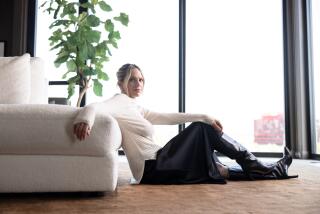A proper site for a Museum of Tolerance
Listening to the few vocal opponents of our Museum of Tolerance Jerusalem project -- among them the notorious Sheik Raed Salah, leader of the extremist Northern Branch of the Islamic Movement in Israel -- you would never know that the Israeli Supreme Court deliberated for almost three years before unanimously rejecting all their claims and authorizing the Wiesenthal Center to begin construction. Just six weeks ago, Chief Justice Dorit Beinish also rebuked those who re-petitioned the Supreme Court for an “abuse of court proceedings,” ordering them to pay professional costs.
Still, our opponents would have you believe that in the name of tolerance, our bulldozers actually have invaded the adjacent Mamilla Cemetery, desecrating ancient Muslim tombstones and historic markers.
They don’t want you to know the real facts. The museum is not being built on what can rightfully be called the Mamilla Cemetery, but on a three-acre site in the heart of West Jerusalem that, for more than half a century, served as the city’s municipal car park. Each day, hundreds of people of all faiths parked in the three-level underground structure without any protest from Muslim religious or academic leaders or interest groups. Additionally, telephone and electrical cables and sewer lines were laid deep below ground in the early 1960s, again without any protest.
As the Supreme Court noted in its ruling, “for almost 50 years the compound has not been a part of the cemetery, both in the normative sense and in the practical sense, and it was used for various public purposes.” It also noted: “During all those years no one raised any claim, on even one occasion, that the planning procedures violated the sanctity of the site, or that they were contrary to the law as a result of the historical and religious uniqueness of the site. . . . For decades this area was not regarded as a cemetery by the general public or by the Muslim community. . . . No one denied this position.”
In fact, the entire area of the Mamilla Cemetery had long been regarded by Muslim religious leaders as mundras -- abandoned. A cemetery not in use for 37 years is considered mundras and without sanctity. That explains why in 1946 the most prominent Islamic religious figure of the day, the Grand Mufti of Jerusalem, presented plans to build a Muslim university on a large portion of the Mamilla Cemetery itself (a rendering of which we presented to the court). Today, the concept of mundras is widely accepted and practiced in Jordan, Lebanon, Egypt, Saudi Arabia, the Palestinian territories and throughout the Arab world.
Though Judaism does not have a mundras concept, the Supreme Court noted in its decision that “despite the Jewish religious law prohibitions . . . to prevent the removal of graves or building on top of them, in practice, in cases where public needs required this, an agreed Jewish law solution has usually been found, and this allowed the building to be carried out in a way that minimized . . . the violation of the graves. . . . Jewish religious law also allows, as we have said, the removal of graves in a dignified manner. Balanced solutions of this kind were also proposed by the respondents [Simon Wiesenthal Center], and they even agreed to pay all the expenses involved in them.”
Recent critics such as the Council on American-Islamic Relations, Americans for Peace Now and the Center for Constitutional Rights argue that the Museum of Tolerance should abide by a higher standard than the letter of the law. We do, as the above quote from the court confirms. When we first heard of protests against our plan, in January 2006, our lawyers attempted to meet with Salah but were rebuffed. Once a legal case was filed, the Supreme Court’s mediator tried, but fared no better. We offered solutions to build without disturbing the bones -- also rejected. We offered to restore the neglected and virtually abandoned nearby Mamilla Cemetery -- not interested.
Since the Israeli government gave us the parking lot nine years ago, the center has endured a process replete with checks and balances: attending planning and architectural hearings and Jerusalem City Council meetings; placing ads announcing the project in Arabic and Hebrew newspapers. During all the years leading up to the groundbreaking, while millions were spent, not a single documented protest was heard from any group or citizen claiming that the parking lot was part of the Mamilla Cemetery.
The irony is that it was Salah and his supporters who petitioned Israel’s Supreme Court in the first place. Unhappy with the verdict, they’ve gone to the United Nations, seeking to rubber-stamp a “lawfare” assault besmirching the Jewish state. Imagine the chaos in the U.S. if a unanimous decision by our highest judicial body could be thwarted by such a protest.
During excavations on our site, the Israel Antiquities Authority found artifacts including a wine press dating back to Solomon’s Temple, and bones, 300 to 400 years old -- none older. Those remains were respectfully reinterred in a Muslim cemetery. The Antiquities Authority has declared that there are no more bones on the site. Infrastructure work at the site has proceeded.
Jerusalem is an ancient city. Hardly a neighborhood is without history’s ruins or remains. We could declare it off-limits -- a city of the past, with no future -- or we could find a better way to honor the past without holding our children hostage. Ultimately, a Museum of Tolerance in the heart of Jerusalem will honor that past and safeguard that future.
Rabbi Marvin Hier is the founder and dean of the Simon Wiesenthal Center.
More to Read
Sign up for Essential California
The most important California stories and recommendations in your inbox every morning.
You may occasionally receive promotional content from the Los Angeles Times.










